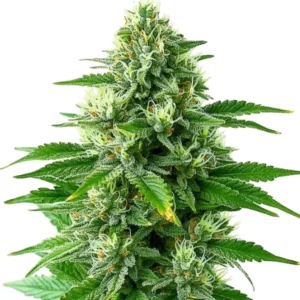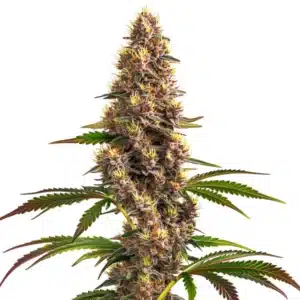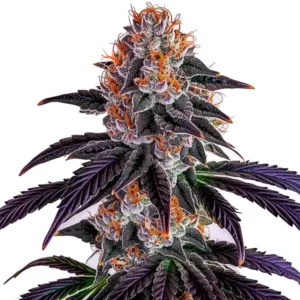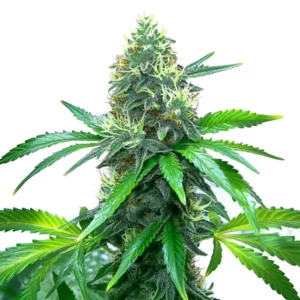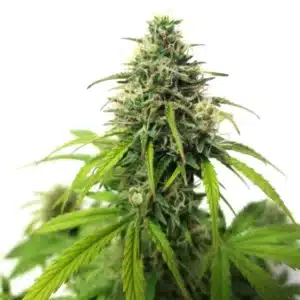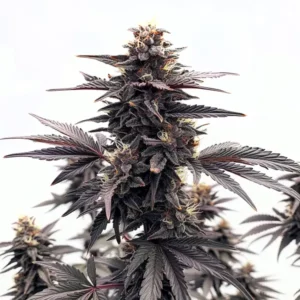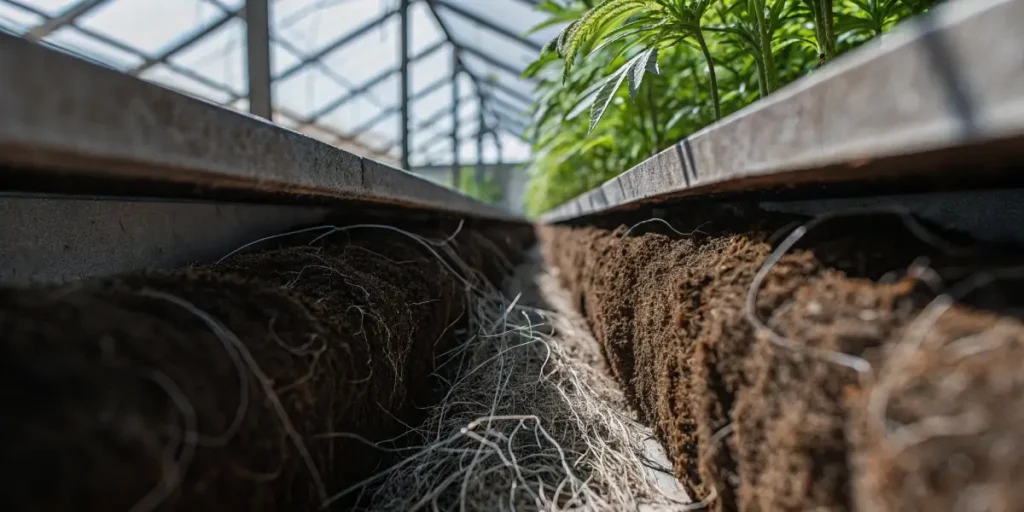
Rhizosphere in Cannabis Cultivation
The area of soil directly influenced by a plant’s roots is known as the rhizosphere. This region is bustling with microorganisms, nutrients, and plant roots, all interacting in a complex dance. In cannabis cultivation, the rhizosphere plays a crucial role. It influences how well your plants grow, the quality of your yield, and overall plant health.
When growing cannabis, the rhizosphere can significantly impact your results. It’s not just about the soil but the whole underground ecosystem. This includes bacteria, fungi, and other microorganisms that thrive around the roots. Each element plays its part in the health of your cannabis plants, making the rhizosphere a vital focus for any grower.
Recommended Strains
POG
|
|
THC | 24% - 28% (High) |
|
|
Type | Feminized |
|
|
Yield | Medium |
|
|
Phenotype | 60% Indica / 40% Sativa |
Fruity Pebbles
|
|
THC | 18% - 20% (Medium) |
|
|
Type | Feminized |
|
|
Yield | High |
|
|
Phenotype | 55% Indica / 45% Sativa |
Experienced growers often pay close attention to this hidden world. By optimizing rhizosphere conditions for cannabis, you can enhance plant growth and resilience. Whether you’re a newbie or have been cultivating for years, knowing the rhizosphere can lead to healthier plants and better yields.
Benefits of Rhizosphere in Cannabis Growth
The benefits of the rhizosphere in cannabis growth are numerous. This micro-world ensures that your cannabis plants receive essential nutrients. It also protects against diseases and pests. By fostering a healthy rhizosphere, growers can reduce their reliance on chemical fertilizers and pesticides.
Take, for example, the strain CBD Medical from Blimburn Seeds. This strain thrives in a well-maintained rhizosphere. The robust microbiome supports nutrient uptake, which can lead to impressive CBD levels. Enhancing cannabis plant health through rhizosphere management can significantly impact the potency and quality of your harvest.
By knowing the benefits of rhizosphere in cannabis growth, growers can tailor their cultivation practices to maximize the performance of their plants. This involves not just improving the soil quality but also ensuring that the microbial population is diverse and thriving. A balanced ecosystem within the rhizosphere is key to unlocking the full potential of cannabis plants, leading to stronger growth and more resilient crops.
Furthermore, the rhizosphere in cannabis cultivation acts as a natural buffer against environmental stresses. With the right microbial community, plants can better withstand fluctuations in temperature and moisture levels. This resilience is crucial for maintaining consistent yields, especially in less-than-ideal growing conditions. By investing in the rhizosphere, growers can cultivate healthier plants and achieve more sustainable production.
- Improved nutrient absorption.
- Enhanced resistance to diseases.
- Increased growth rates.
- Better yield quality.
- Reduction in chemical use.
Promos & Deals
Rhizosphere Microbiome Impact on Cannabis Yield
The rhizosphere microbiome impact on cannabis yield is profound. Microbes in the rhizosphere break down organic matter, releasing nutrients that plants can absorb. This natural process not only nourishes the cannabis but also improves soil structure. Healthy soil retains water better and supports root growth.
Consider the Gorilla Glue #4 strain. Known for its high THC levels and pungent aroma, Gorilla Glue #4 benefits significantly from a thriving rhizosphere microbiome. The interaction between roots and microbes enhances resin production, boosting the strain’s signature potency and flavor.
The rhizosphere microbiome impact on cannabis yield extends beyond nutrient availability. It also influences the plant’s ability to uptake water and other vital resources, leading to more robust growth and development. A healthy microbiome creates an optimal environment for roots to expand and explore, which is essential for maximizing plant potential.
Additionally, the rhizosphere in cannabis cultivation plays a critical role in pest and disease management. A diverse and active microbial community helps suppress pathogens and minimizes the likelihood of infestations. This biological control mechanism enhances the plant’s defenses, reducing the need for harmful chemical treatments and supporting organic cultivation methods.
- Microbes decompose organic material.
- Enhanced nutrient availability.
- Improved soil health.
- Better water retention.
- Increased root development.
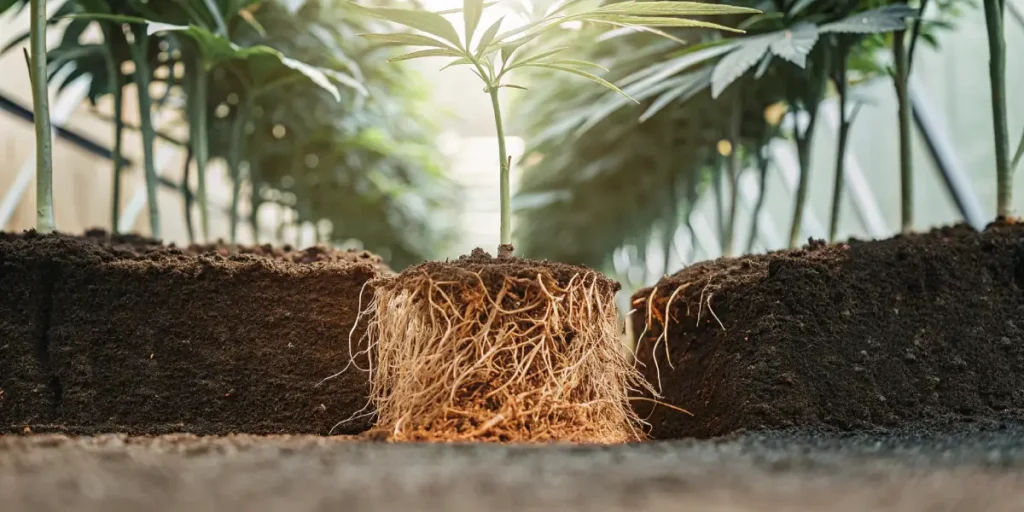
Optimizing Rhizosphere Conditions for Cannabis
Optimizing rhizosphere conditions for cannabis involves a few key steps. First, ensure your soil has the right texture and composition. Well-draining soil with plenty of organic matter is ideal. This promotes a healthy environment for beneficial microbes.
Adding organic amendments like compost or worm castings can significantly improve rhizosphere conditions. These natural boosters increase microbial activity, providing a feast for your cannabis plants. It’s like adding superfood to their diet, ensuring they grow strong and healthy.
Another essential aspect of optimizing rhizosphere conditions for cannabis is maintaining a balanced pH level. The correct pH ensures that nutrients are available to plants, promoting efficient uptake and utilization. Regular soil testing can help growers monitor and adjust pH levels as needed, ensuring optimal growth conditions.
Moreover, incorporating mycorrhizal fungi into the cultivation process can greatly enhance rhizosphere health. These symbiotic fungi form a network that extends beyond the root zone, increasing the plant’s ability to access nutrients and water. By enhancing the rhizosphere in cannabis cultivation, growers can achieve higher yields and healthier plants.
Role of Rhizosphere Bacteria in Cannabis Cultivation
The function of rhizosphere bacteria in cannabis cultivation cannot be overstated. These microscopic helpers break down complex compounds into simpler forms that plants can easily absorb. They are the unsung heroes, working tirelessly to support plant health.
Bacteria also play a defensive role. They can outcompete harmful pathogens, creating a protective shield around the roots. This natural defense system reduces the need for chemical interventions and promotes sustainable cultivation practices.
Rhizosphere bacteria contribute to the overall balance and diversity of the microbial community, which is crucial for plant health. Their presence can stimulate root growth and development, leading to more vigorous plants. By fostering a thriving bacterial population, growers can enhance the benefits of rhizosphere in cannabis growth.
Furthermore, certain strains of bacteria have been shown to produce growth-promoting substances, such as hormones and enzymes, that further benefit the plant. These compounds can boost the plant’s natural defenses and improve its ability to withstand environmental stresses. By knowing the function of rhizosphere bacteria in cannabis cultivation, growers can harness these benefits to achieve healthier, more productive crops.
Enhancing Cannabis Plant Health Through Rhizosphere Management
Enhancing cannabis plant health through rhizosphere management starts with knowing what your plants need. Regular soil testing can provide insights into pH levels, nutrient availability, and microbial activity. Armed with this information, you can tailor your approach to meet the specific needs of your strains.
Incorporating cover crops or mulch can also be beneficial. These practices improve soil structure and provide a habitat for beneficial organisms. They help maintain moisture levels and prevent soil erosion, further supporting a healthy rhizosphere.
By enhancing cannabis plant health through rhizosphere management, growers can create a more resilient and sustainable cultivation system. This approach reduces reliance on chemical inputs and supports the natural processes that drive plant growth. As a result, growers can enjoy higher-quality yields and a reduced environmental footprint.
Moreover, adopting a holistic view of rhizosphere management entails considering the entire ecosystem surrounding the plant. This includes knowing the interactions between different microbial communities and their collective impact on plant health. By promoting a diverse and balanced rhizosphere in cannabis cultivation, growers can achieve long-term success and sustainability in their operations.
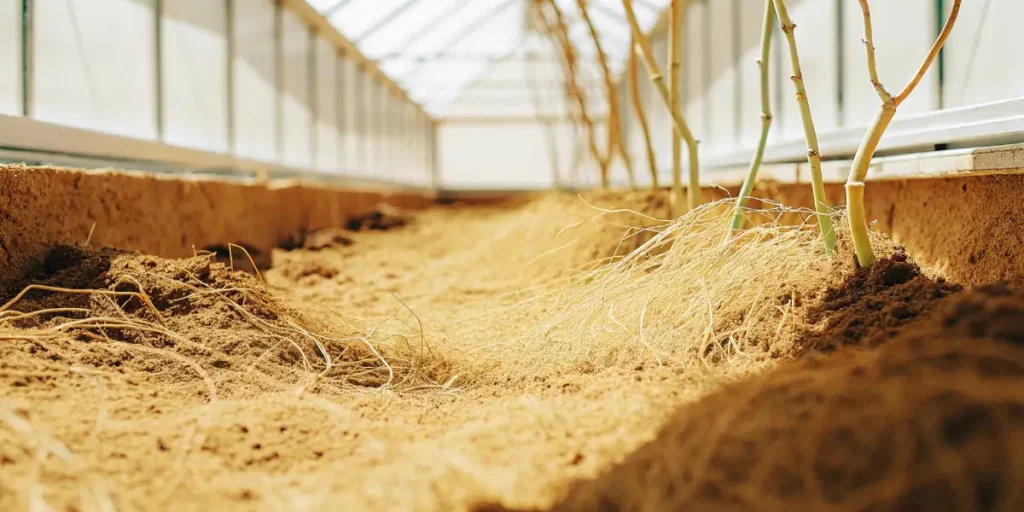
FAQs: Rhizosphere in Cannabis Cultivation
What is the rhizosphere in cannabis cultivation?
The rhizosphere in cannabis cultivation refers to the zone around the plant’s roots that is teeming with life. This area is vital for nutrient exchange and is where plants interact with microorganisms. These interactions are crucial for the plant’s overall health and growth.
For cannabis growers, knowing the dynamics of the rhizosphere can lead to better cultivation practices. By promoting a healthy rhizosphere, growers can enhance nutrient uptake and improve plant resilience, leading to higher yields and better quality cannabis.
The concept of the rhizosphere in cannabis cultivation extends beyond nutrient exchange. It encompasses the entire underground ecosystem that supports plant life. By focusing on this critical zone, growers can unlock the full potential of their plants and achieve more consistent and successful harvests.
Additionally, promoting a healthy rhizosphere can lead to a more sustainable cultivation approach. By leveraging the natural processes within the rhizosphere, growers can reduce their reliance on synthetic inputs, ultimately contributing to environmental conservation and improved crop quality.
How does the rhizosphere microbiome impact cannabis yield?
The rhizosphere microbiome plays a critical role in cannabis yield by breaking down organic matter into nutrients that plants can absorb. This process not only feeds the plant but also improves soil health and structure, leading to better water retention and root growth.
A thriving rhizosphere microbiome can enhance the potency and flavor profile of cannabis strains. By fostering a diverse microbial community, growers can optimize conditions for robust plant growth and improve the overall quality of their harvest.
The rhizosphere microbiome impact on cannabis yield is not limited to nutrient cycling. It also affects the plant’s stress tolerance and ability to adapt to changing environmental conditions. This adaptability is crucial for maintaining consistent yields and high-quality crops.
By nurturing a healthy rhizosphere microbiome, growers can also improve soil fertility and reduce the need for external fertilization. This not only lowers production costs but also supports sustainable farming practices, making it a win-win for both growers and the environment.
Why is it important to optimize rhizosphere conditions for cannabis?
Optimizing rhizosphere conditions for cannabis is important because it directly affects plant health and yield. A well-maintained rhizosphere ensures that plants have access to essential nutrients and are protected from diseases and pests.
By creating an environment conducive to beneficial microbes, growers can reduce their reliance on chemical fertilizers and pesticides. This not only supports plant health but also promotes sustainable cultivation practices, which are better for the environment.
Optimizing rhizosphere conditions for cannabis involves a comprehensive approach that considers soil composition, microbial diversity, and environmental factors. By addressing each of these components, growers can create a thriving ecosystem that supports robust plant growth and development.
Furthermore, a well-optimized rhizosphere can improve the resilience of cannabis plants to environmental stressors such as drought or disease outbreaks. This resilience is essential for achieving consistent yields and maintaining the overall quality of the crop, regardless of external conditions.
What role do rhizosphere bacteria play in cannabis cultivation?
Rhizosphere bacteria are crucial in cannabis cultivation because they help decompose organic matter into nutrients that plants can use. They also play a protective role by outcompeting harmful pathogens and creating a healthy environment for plant roots.
By promoting a diverse population of beneficial bacteria, growers can enhance plant growth and resilience. This natural approach to cultivation supports sustainable practices and leads to healthier, more robust cannabis plants.
The function of rhizosphere bacteria in cannabis cultivation also includes enhancing nutrient uptake efficiency. These microorganisms can solubilize phosphates and other minerals, making them more accessible to plants and boosting overall growth performance.
Besides to their nutrient-related functions, rhizosphere bacteria can influence the plant’s stress responses. By modulating hormonal pathways, these bacteria can help plants better cope with adverse conditions, ultimately contributing to improved yield and quality.
How can growers enhance cannabis plant health through rhizosphere management?
Growers can enhance cannabis plant health through rhizosphere management by ensuring optimal soil conditions. Regular soil testing and the addition of organic amendments like compost can boost microbial activity and improve nutrient availability.
Incorporating sustainable practices such as cover cropping and mulching can also benefit the rhizosphere. These methods improve soil structure, maintain moisture levels, and provide a habitat for beneficial organisms, all of which contribute to healthier cannabis plants.
Enhancing cannabis plant health through rhizosphere management also involves fostering biodiversity within the soil. By encouraging a wide range of microbial species, growers can create a more resilient and balanced ecosystem that supports plant growth and development.
Moreover, growers can implement integrated pest management (IPM) strategies that leverage the natural pest control capabilities of a healthy rhizosphere. By reducing the reliance on chemical interventions, these practices support more sustainable and environmentally friendly cultivation methods.


